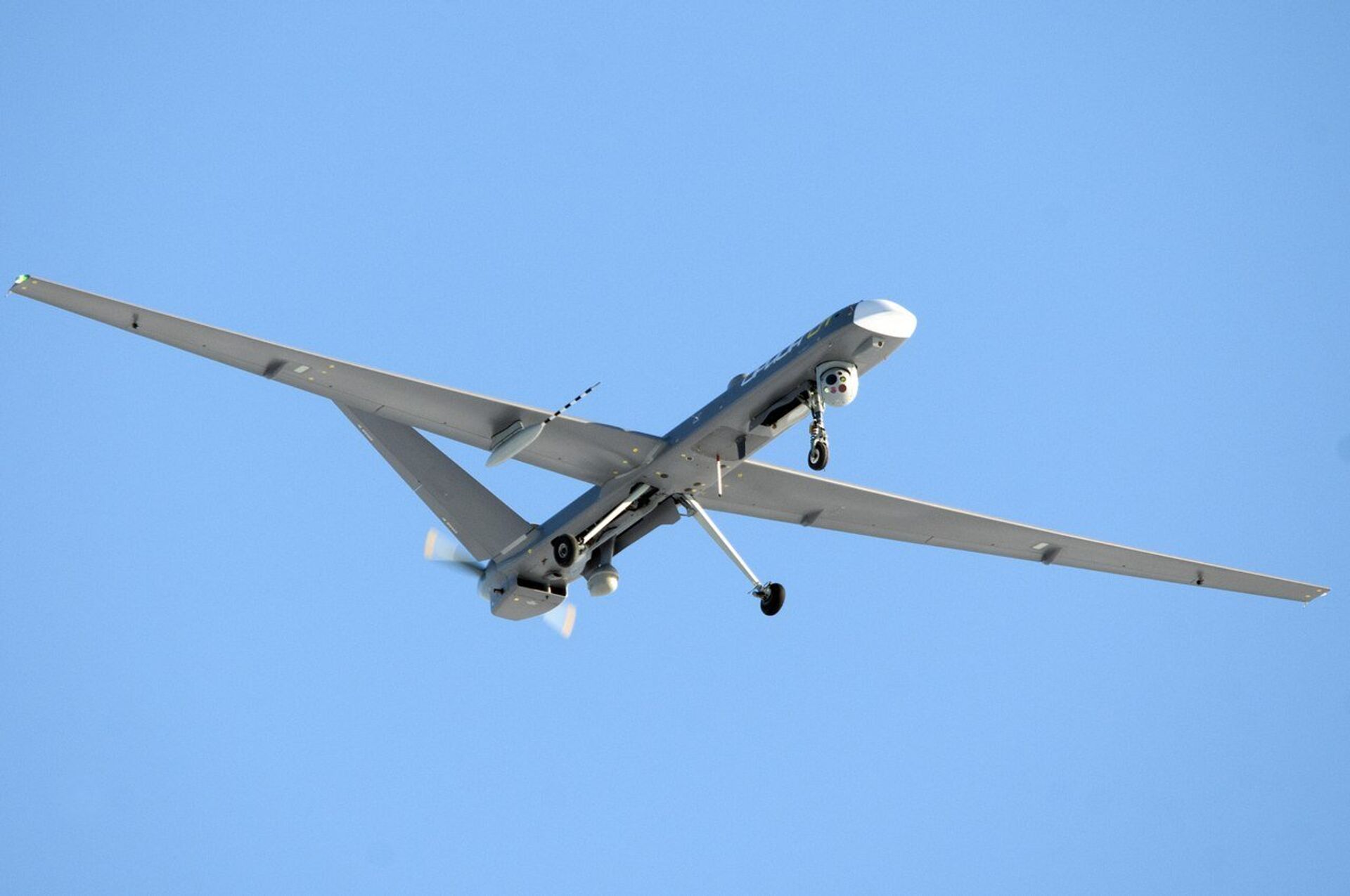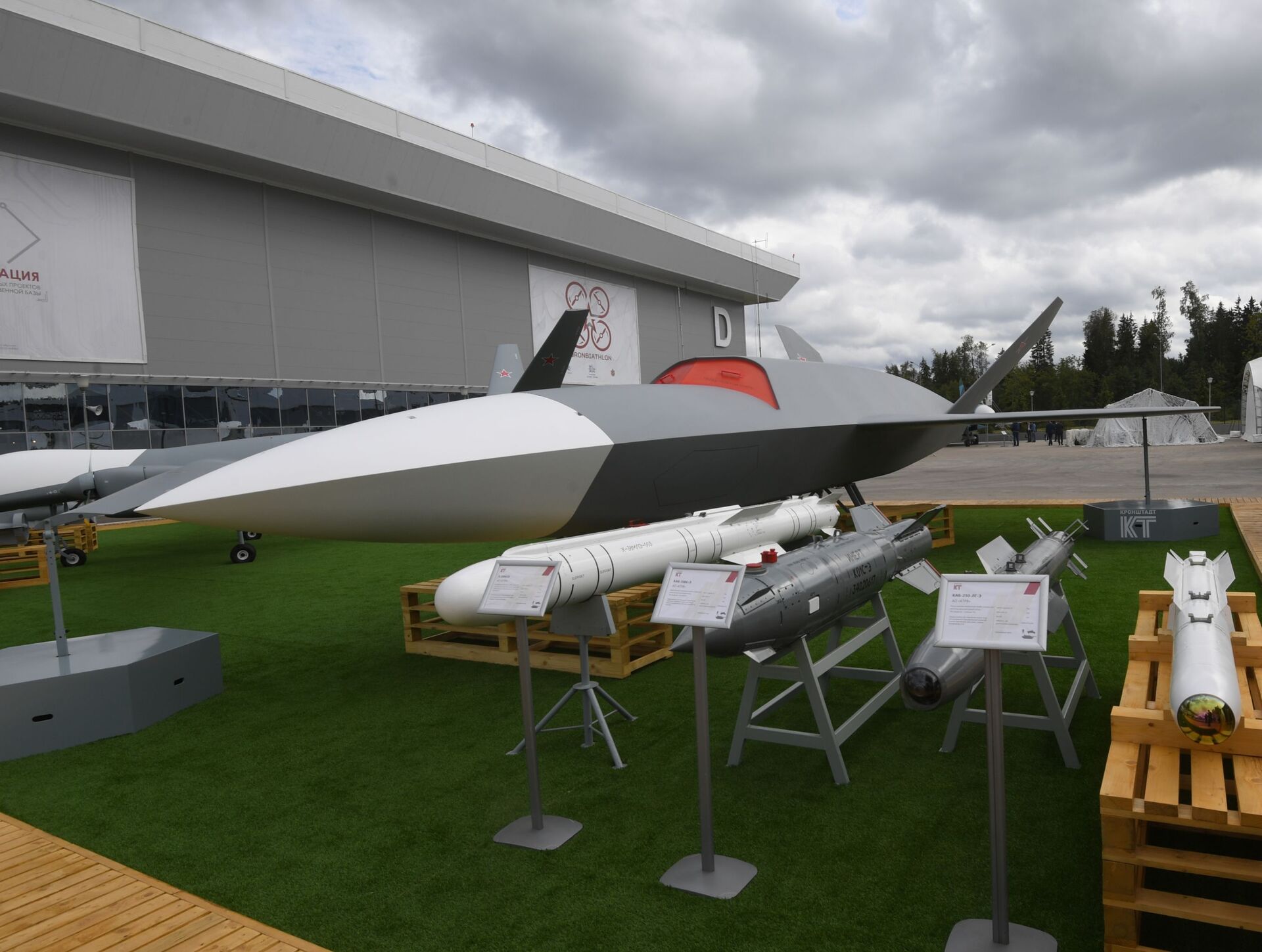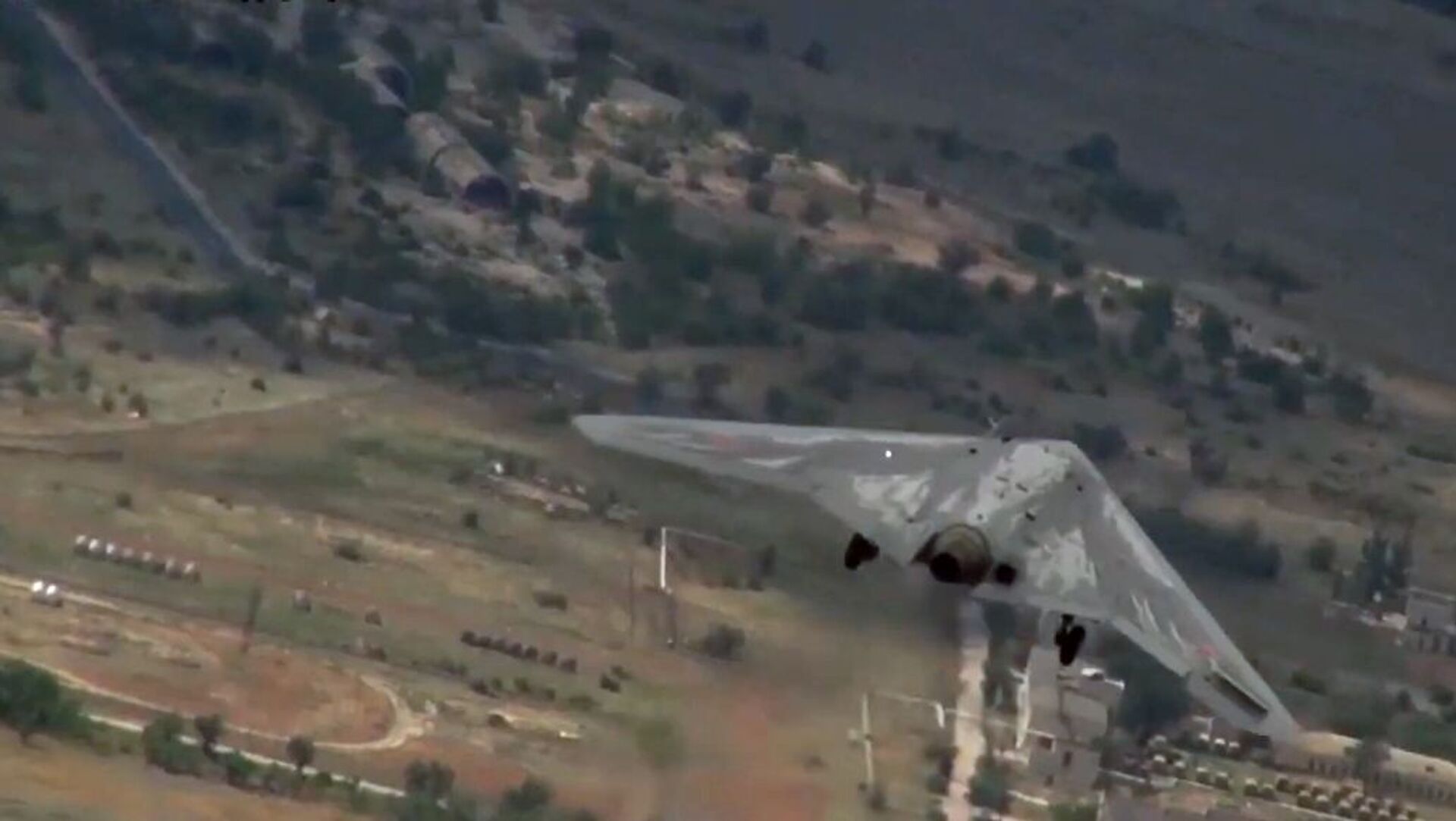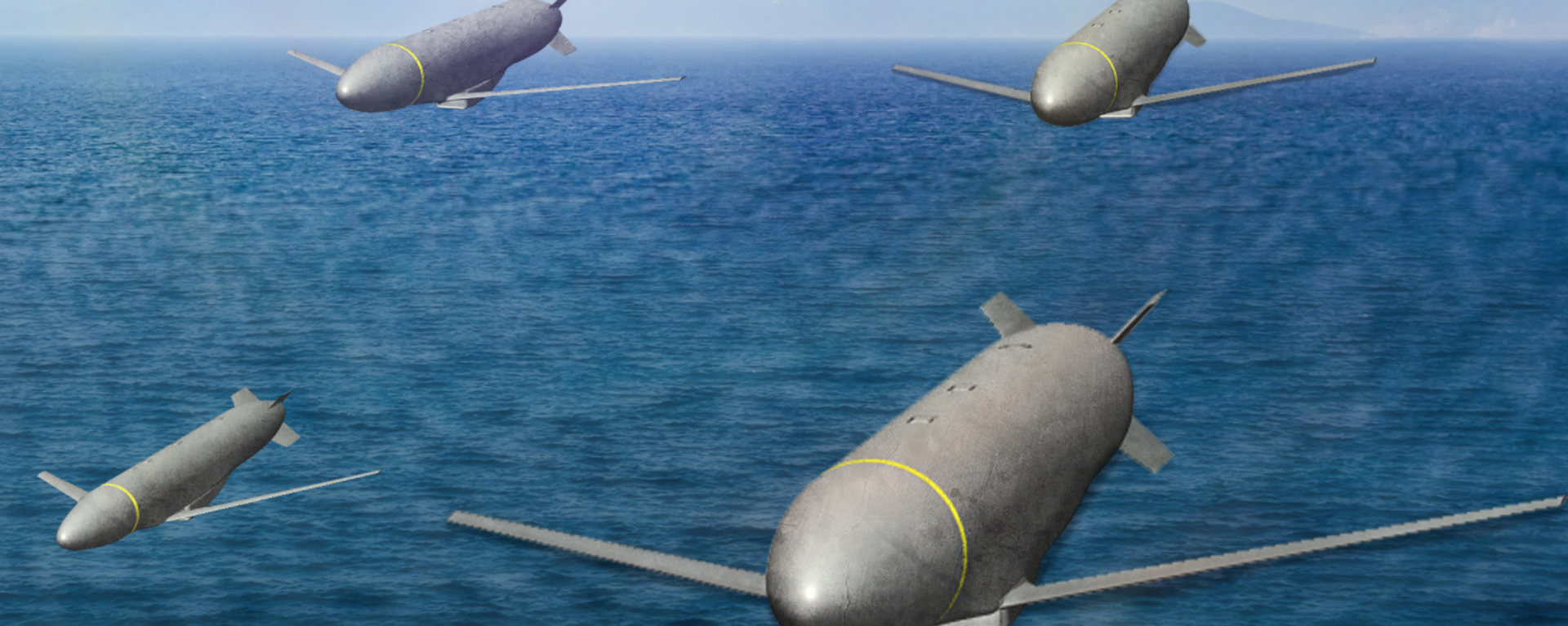Designed to Win: Check Out Six Top-Notch Russian Drones

© Photo : YouTube / Zvezda
Subscribe
Drones have conquered the battlefield in the Ukraine conflict, becoming an almost indispensable modern warfare technology. Why has Russia managed to adapt to this revolutionary shift so quickly?
Two Russia-made drones – the Lancet and the Geran – have already stolen Western headlines as highly effective combat uncrewed systems, but what about the other unmanned aerial vehicles (UAVs) exploited by the Russian Armed Forces?
In 2021, the National Interest named Russia's best six "killer drones", raising the question whether the nation would catch up with its peers – the US and Turkiye – in mass producing and using UAVs on the battlefield. Among those mentioned by the NI at the time were Orion, Altius, Sirius, Helios, Grom, and Okhotnik.
Sputnik reached out to Andrei Koshkin, Soviet and Russian Army veteran, reserve colonel and military expert, to discuss the state-of-art systems that have been somehow neglected by the mainstream media.
Orion-10 and Orion-3
"In the Russian army [Orion] is known as the Inokhodets [the Pacer]," Koshkin told Sputnik. "It belongs to the class of Medium-Altitude Long Endurance (MALE) unmanned aerial vehicles (UAV).
"Their wingspan is quite large: 16 meters. The body of the drone is eight meters long and has a take-off weight of about 1000 kilograms with a maximum payload of 450 kilograms. And what makes it possible to arm it with four missiles or specially designed small-caliber correction bombs, the so-called Kab20, Kab50. Well, and the UPAB-50 gliding aerial bomb. It must be said that these drones are very actively used by the armed forces of the Russian Federation in the combat zone of a special military operation."
The Orion, a family of Russian UAVs developed by the Kronstadt Group, had also proven effective during the Syrian war: by February 2021, the drone had made 38 flights in Syria, including 17 attacks on terrorist targets, 20 reconnaissance missions and one mission "for other purposes".
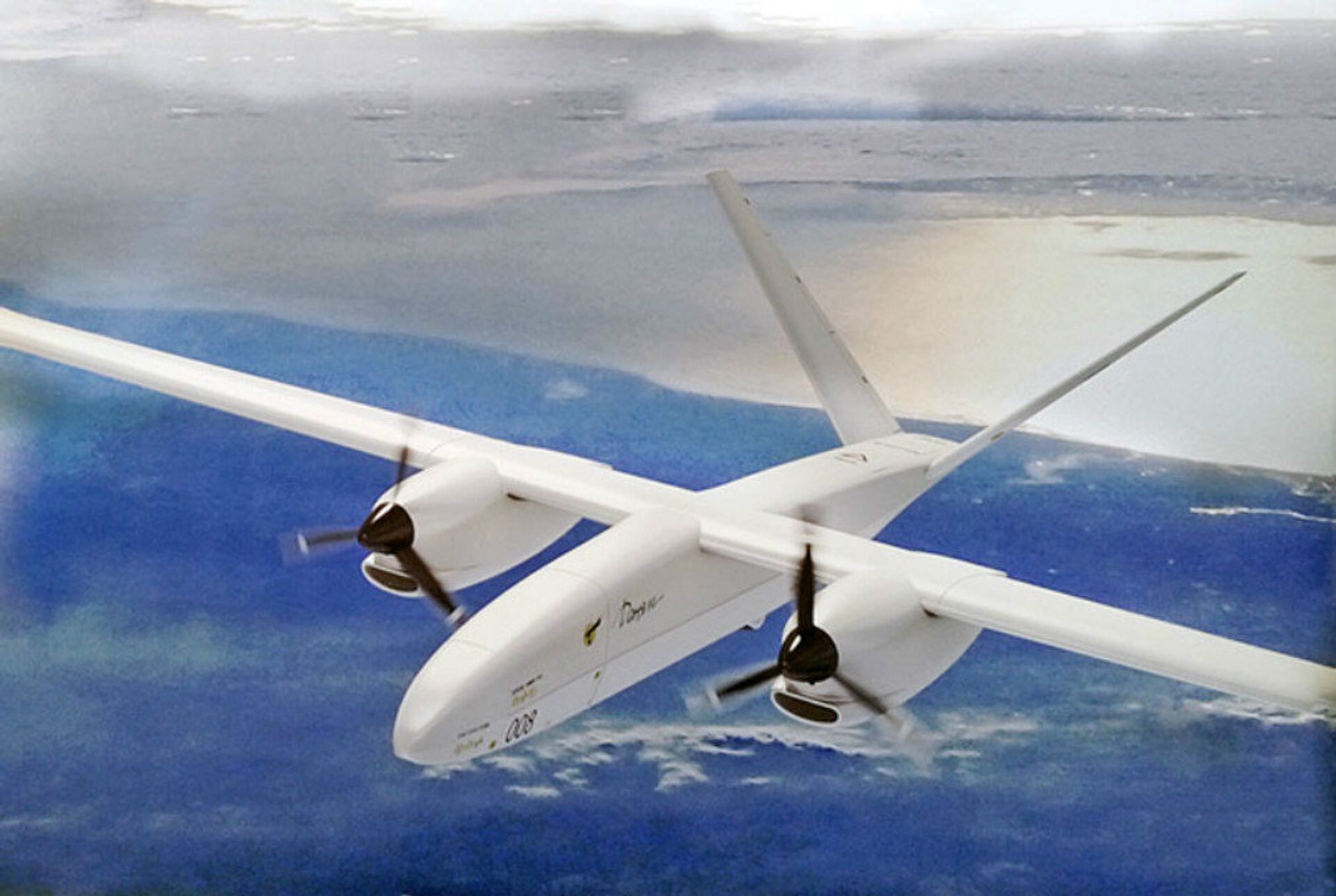
Altius-M
© Photo : Taken from official site militaryrussia.ru
Altius-U
The Altius-U, a formidable heavy-duty combat drone developed by the Russian Sokol Design Bureau, is also used in the special military operation, according to Sputnik's interlocutor.
"It is designed mostly for reconnaissance missions, and its wingspan is much larger [than that of the Orion] - 28 meters," Koshkin said.
"An optical-electronic reconnaissance station and a side radar have been installed on the UAV, allowing for a fairly wide coverage of the reconnaissance area and its flight range reaches about 7,000 kilometers. Moreover, it can stay in the air for 48 hours, that is, two days; and it has a cruising speed of up to 250 kilometers per hour. Its combat load also reaches one ton. That is, this is almost twice as much as that of the Orion."
Sirius
Sirius is a Russian attack unmanned aerial vehicle developed by the Russian company Kronstadt, and based on the Orion platform.
"The Sirius unmanned vehicle is a more advanced model of Orion," explained Koshkin. "Our unmanned vehicles are constantly modernized. We are studying the needs of operators and command personnel on the battlefield who use drones in combat operations. And, naturally, in connection with this, improvements are being made in order to boost [the weapon's] tactical and technical characteristics, which is why Sirius appeared."
The expert pointed out that the Sirius flight radius has increased to 1000 kilometers while the bomb load has increased to 300 kilograms.
"It belongs to the class of medium-altitude, long-duration unmanned vehicles and has already received a take-off weight of two tons: twice as much. That's the peculiarity. 20 hours in the air continuously at an altitude of 7000 meters," Koshkin pointed out.

Mockup of Helios drone.
© Photo : Russian Ministry of Industry and Trade
Helios
The Helios is a reconnaissance drone developed by the Kronstadt Group. It was designed for long-term patrolling in a given area.
"The Helios reconnaissance aircraft has a wingspan of as much as 30 meters," Koshkin noted. "We see that the wingspan is constantly increasing, and the tactical and technical characteristics are improving in terms of duration in the air, range, and missions."
The take-off weight of the Helios reaches four tons, with a load capacity of 800 kg. The UAV has a cruising speed of 350-450 km/h and is capable of rising to a height of 11 thousand meters. Its maximum flight duration is 30 hours, and its range is 3,000 km.
Per Koshkin, the Helios is yet to be extensively used on the battlefield. It was reported that its onboard radar provides search and tracking of air, ground and surface targets. The drone could be used for a single reconnaissance mission as well as in groups with other aircraft.
Grom ('Thunder')
"The high-speed Grom ["Thunder"] has a combat load of two tons. Its take-off weight is seven tons. That is, these are quite impressive tactical and technical characteristics," Koshkin said.
The Grom is also the Kronstadt Group's brainchild. The UAV has a classic "aircraft" design and V-shaped tail. Its wingspan is 10 meters, and its length reaches almost 14 meters. Its maximum speed is 1000 km/h and its cruising speed is 800 km/h.
"It can, hypothetically, carry X-38 air-to-surface guided missiles," the expert said. "Well, it can, of course, use a wide range of aviation weapons. This includes guided missiles and guided bombs Kab250 and Kab500. That is, not the small ones for small drones, but the powerful ones used by bombers."
What's more, the Grom can control a swarm of drones which is rapidly gaining popularity, noted Koshkin.
"For a successful attack, use a swarm of drones. And now it is able to do this by operating 10 small-sized Molniya drones. It can control them at once," the military veteran explained.
Okhotnik ('Hunter')
"When it comes to Okhotnik, this drone has been in development for a long time," Koshkin said.
"This is a jet drone. It was developed together with the fifth-generation Su-57 fighter aircraft. It is constantly in modernization/refinement mode, because it is already a rather complex weapon. And naturally, its parameters are increasing in height, combat load, and, of course, its range is also increasing very strongly. It is also called S-70. This is already a heavy drone. That is, if those (all other drones) are of the middle class, then the Okhotnik is a heavy attack drone. Its length is about 14, the wingspan is not very large - 19 meters, but the combat load is almost three tons (2.8 tons)."
The Okhotnik attack unmanned aerial vehicle was developed at the Sukhoi Design Bureau. In May 2022, during the drone's tests the Okhotnik fired at ground targets with guided missiles, which are part of the armament of the Su-57 fighter, a source familiar with the matter told Sputnik. The head of Rostec Corporation, Sergei Chemezov, stated at the time that serial production of the Okhotnik heavy attack drones for the Ministry of Defense would begin in 2023.
Why are Russian Drones Better Than Their Western Analogues?
Even though it is believed that the US drones are top-notch, many of them have proven to be useless in the special military operation. Koshkin explained that no matter how advanced the machine is, one should take into account plenty of battlefield factors and wartime conditions.
"It’s one thing to have one or two samples at home and tell everyone that 'We are high-tech. We create unmanned vehicles,' and quite another thing is to use them on the battlefield," the military expert said. "That is, this means creating an appropriate team of specialists, learning to interact with the combined arms commander who organizes the battle, interacting with artillery and armored units. That is, all this is much more complicated," he said.
"And here a moment of truth comes: could these tactical and technical characteristics be used to the maximum in these conditions? It may turn out that your drones are used very ineffectively by a team that is either not trained, or does not know how, or, in principle, has not received the appropriate combat experience," Koshkin highlighted, referring to the crashing failure of the Ukrainian counteroffensive.
That is why representatives of Russian enterprises of the military-industrial complex, including those that manufacture unmanned vehicles, are regularly visiting the zone of the special military operation, explained the military veteran. They compare characteristics that they designed and produce at the factory with what is needed for modern warfare on the Ukrainian battlefield.
While the US military used to boast that they turned Ukraine into their testing field, the failed counteroffensive has indicated that it was Russians, not Americans, who have learned their lessons fast, according to the reserve colonel.
"There are now a lot of features that largely determine the very configuration, the very silhouette of the high-intensity conflict that is taking place on the territory of Ukraine," Koshkin concluded.

